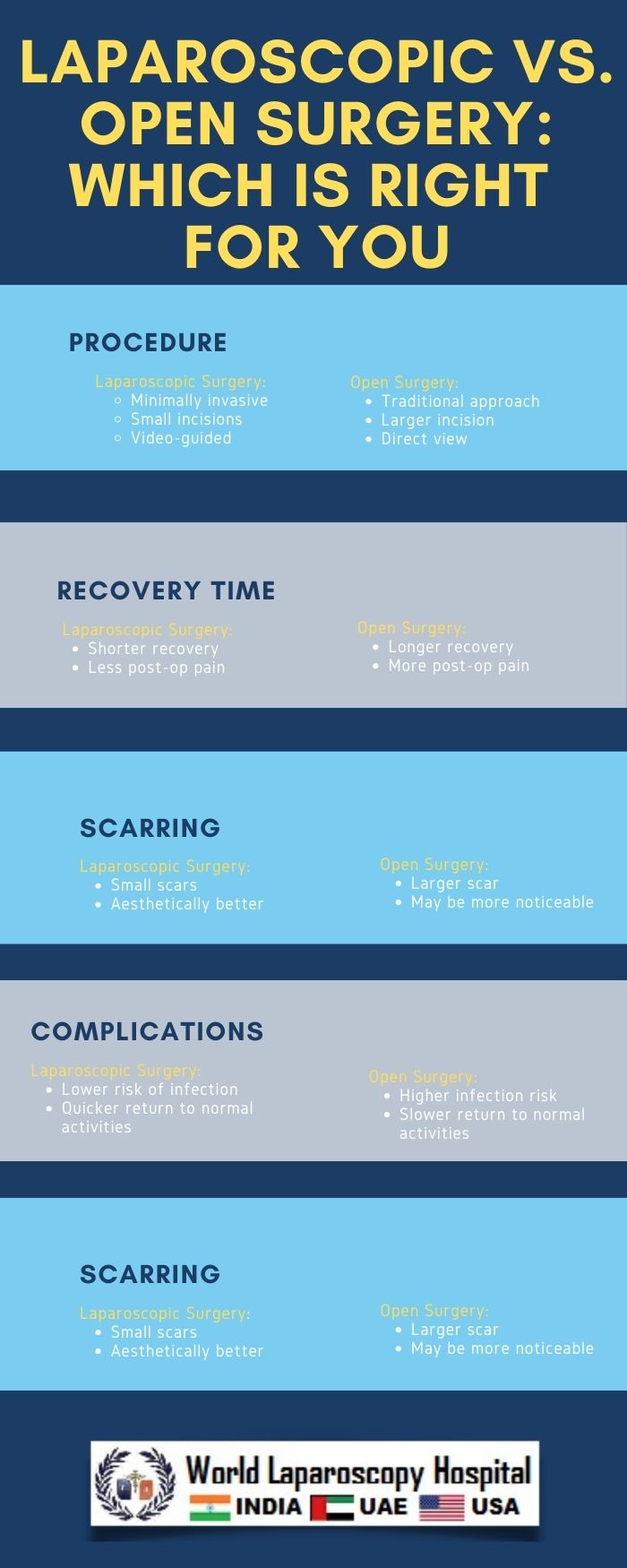Laparoscopic vs. Open Surgery: Which Is Right for You?
Introduction
In the world of surgical procedures, two primary approaches stand out: laparoscopic and open surgery. These techniques have revolutionized the field of surgery, offering patients different options for various medical conditions. The choice between laparoscopic and open surgery can significantly impact the outcome of a procedure and a patient's recovery. In this article, we will delve into the key differences between these two approaches and help you understand which one might be right for you.

Understanding Laparoscopic Surgery
Laparoscopic surgery, often referred to as minimally invasive surgery, involves making small incisions and using a laparoscope (a tiny camera) to guide the surgeon's instruments. Here are some key aspects to consider when contemplating laparoscopic surgery:
Benefits of Laparoscopic Surgery
- Minimal scarring: The small incisions result in less noticeable scars.
- Reduced pain: Patients often experience less postoperative pain compared to open surgery.
- Faster recovery: Due to smaller incisions and less tissue manipulation, recovery times are generally shorter.
- Lower risk of infection: Smaller incisions reduce the risk of infection.
Common Procedures Performed Laparoscopically
- Gallbladder removal (Cholecystectomy)
- Appendectomy
- Hernia repair
- Colon surgery
- Gynecological procedures (e.g., hysterectomy)
Is Laparoscopic Surgery Right for You?
- Laparoscopic surgery is suitable for many conditions, but not all. Your surgeon will determine if you are a candidate based on your specific case.
The Open Surgery Approach
Open surgery, on the other hand, involves making a larger incision to access the surgical area directly. Here are some key aspects to consider when contemplating open surgery:
Benefits of Open Surgery
- Direct access: Surgeons have a clear view and can manipulate tissues more easily.
- Versatility: Open surgery can be used for a wide range of procedures, including complex ones.
- Accessibility: It may be the only option for certain conditions or patients with specific medical histories.
Common Procedures Performed Openly
- Cardiac surgeries (e.g., bypass surgery)
- Some cancer surgeries
- Organ transplants
- Major trauma cases
- Spinal surgeries
Is Open Surgery Right for You?
- Open surgery may be necessary for specific medical conditions or when laparoscopic surgery is not feasible or safe.
Making the Right Choice
Factors Influencing the Choice
- Medical condition: The nature and severity of your condition play a significant role in the choice of surgical approach.
- Surgeon's expertise: Your surgeon's experience and skill level with both techniques matter.
- Patient preferences: Some patients may have a strong preference for one approach based on personal considerations.
The Role of Technology
- Advancements in surgical technology have made laparoscopic procedures more accessible for a broader range of conditions.
- Robotic-assisted surgery is a cutting-edge option that combines the benefits of laparoscopic surgery with enhanced precision.
Consultation with Your Surgeon
- A detailed discussion with your surgeon is essential to determine the most suitable approach for your case.
- Ask questions, understand the risks and benefits, and discuss your concerns.
Recovery and Aftercare
Laparoscopic Surgery Recovery
- Patients can often go home the same day or within a short hospital stay.
- Minimal scarring may result in improved cosmetic outcomes.
- Following postoperative instructions is crucial for a smooth recovery.
Open Surgery Recovery
- Recovery time may be longer, with a more extended hospital stay.
- Larger incisions may lead to more noticeable scars.
- Physical therapy and rehabilitation may be necessary for certain procedures.
Conclusion
In the debate between laparoscopic and open surgery, there is no one-size-fits-all answer. The choice depends on various factors, including your specific medical condition, surgeon's expertise, and your preferences. Both techniques have their merits, and advances in medical technology continue to blur the lines between them.
Ultimately, the decision should be made in consultation with your surgeon, who can provide you with personalized recommendations based on your unique situation. Your health and well-being should be the top priority, and the right surgical approach can make a significant difference in your outcome and quality of life.